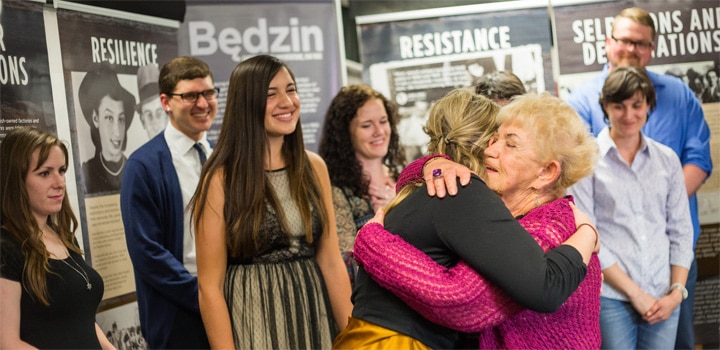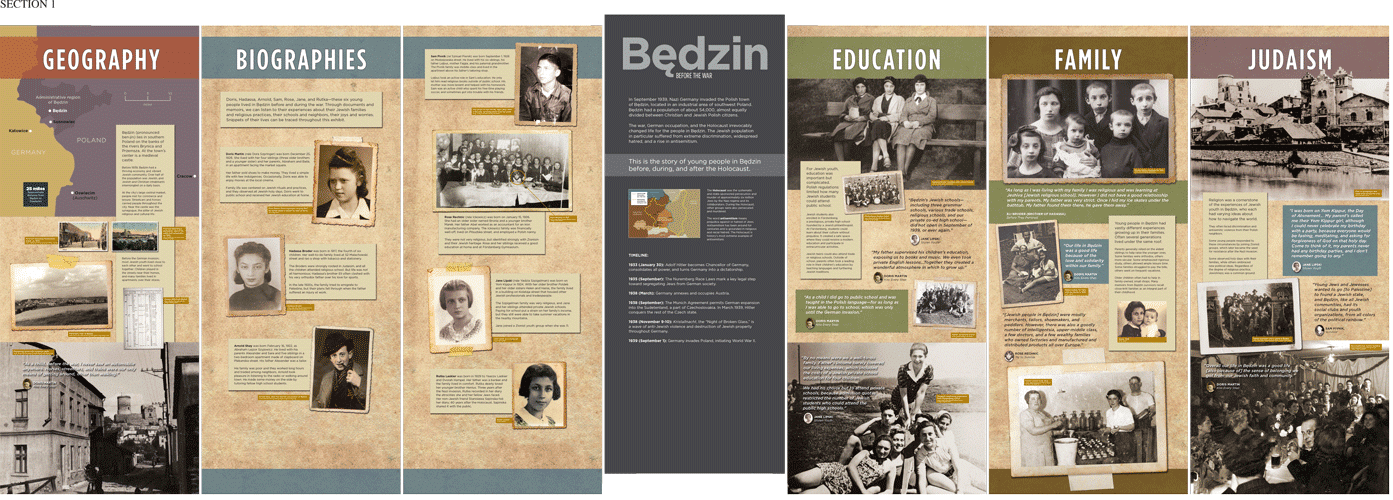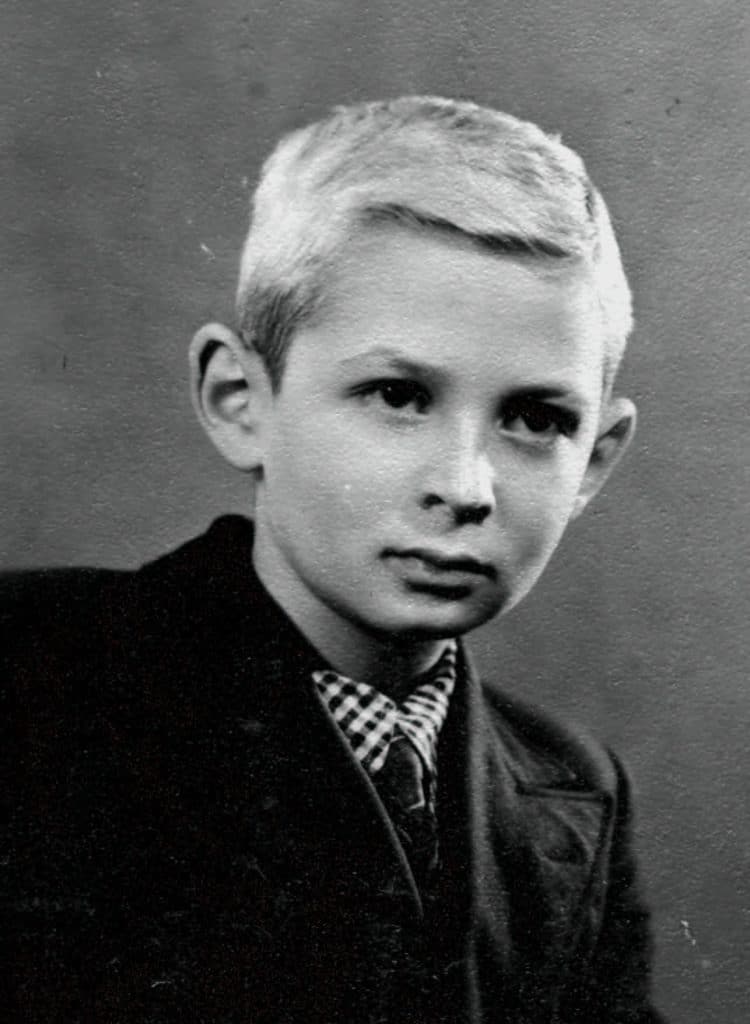
George Zimmerman was born Oct. 20, 1933, in Poland. Six years later, came anyone’s worst nightmare—war.
Zimmerman and his Jewish family tried to keep a low profile, residing next to a slaughterhouse where screams of animals haunted him until being forced to the Będzin Ghetto, one of the many ghettos set up by Nazi Germany for Polish Jews. There, his family and 40 others hid in the attic for more than a week before being discovered and captured by army officers. They managed to escape captivity and fled to Budapest, Hungary, only to be caught again and transported to the Sered labor camp in Slovakia. In November 1944, Zimmerman and his family were deported to Auschwitz.
This is just one of dozens of stories to surface because of the exhibit, “Through the Eyes of Youth: Life and Death in the Będzin Ghetto,” a product of Northern Arizona University’s Martin-Springer Institute.
Preserving and understanding the Holocaust in its entirety is exactly why the Martin-Springer Institute was created, and this exhibit has been a long time coming. Founded in 2000 by Ralph and Doris Martin, the institute was built to raise awareness of human rights by remembering the stories of injustice, such as Poland’s ghettos, through the use of seminars, public speakers, exhibits and applied research opportunities.
After the Martin-Springer Institute was established, professor and director of the institute Björn Krondorfer and former professor Martin Kalb had hopes to create an exhibit that exposed the realities of the ghetto in Będzin as a way to honor Doris Martin, a Holocaust survivor. More than just a small showcase that people could see when they passed through Flagstaff, Krondorfer and Kalb wanted to create something with a much further reach—an exhibit that would travel the world.
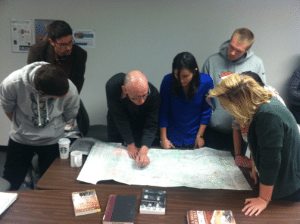
With the help of 12 NAU interdisciplinary students, recruited to dig through archives of Poland’s history and conduct interviews about the Holocaust, “Through the Eyes of Youth: Life and Death in the Będzin Ghetto” was born.
“Conducting research was the easy part,” said NAU alumnus Justin Bigelow, who was studying to receive his bachelor’s degree in history when he was selected for the project. “Collaborating with a group of people from different backgrounds was a little more challenging.”
Despite the challenges, the exhibit that came out of the research and collaboration was worth it, Bigelow said.
“It was really rewarding to work with a group of people that cared, and I mean genuinely gave a damn about the story we were trying to tell,” he said.
On Sept. 14, 2014, the exhibit was unveiled. It traveled throughout Arizona, and eventually made its way across the United States. Following its unveiling, a new team of undergraduates began converting the exhibit into digital media, a process that would take more than two years. Thanks to their efforts, glimpses into the 1940s Będzin Ghetto can now be seen online—fuzzy, tattered, black-and-white photographs depict crowds of people, furniture piled in alleyways, some people caught candidly and others who stare blankly into the camera lens.
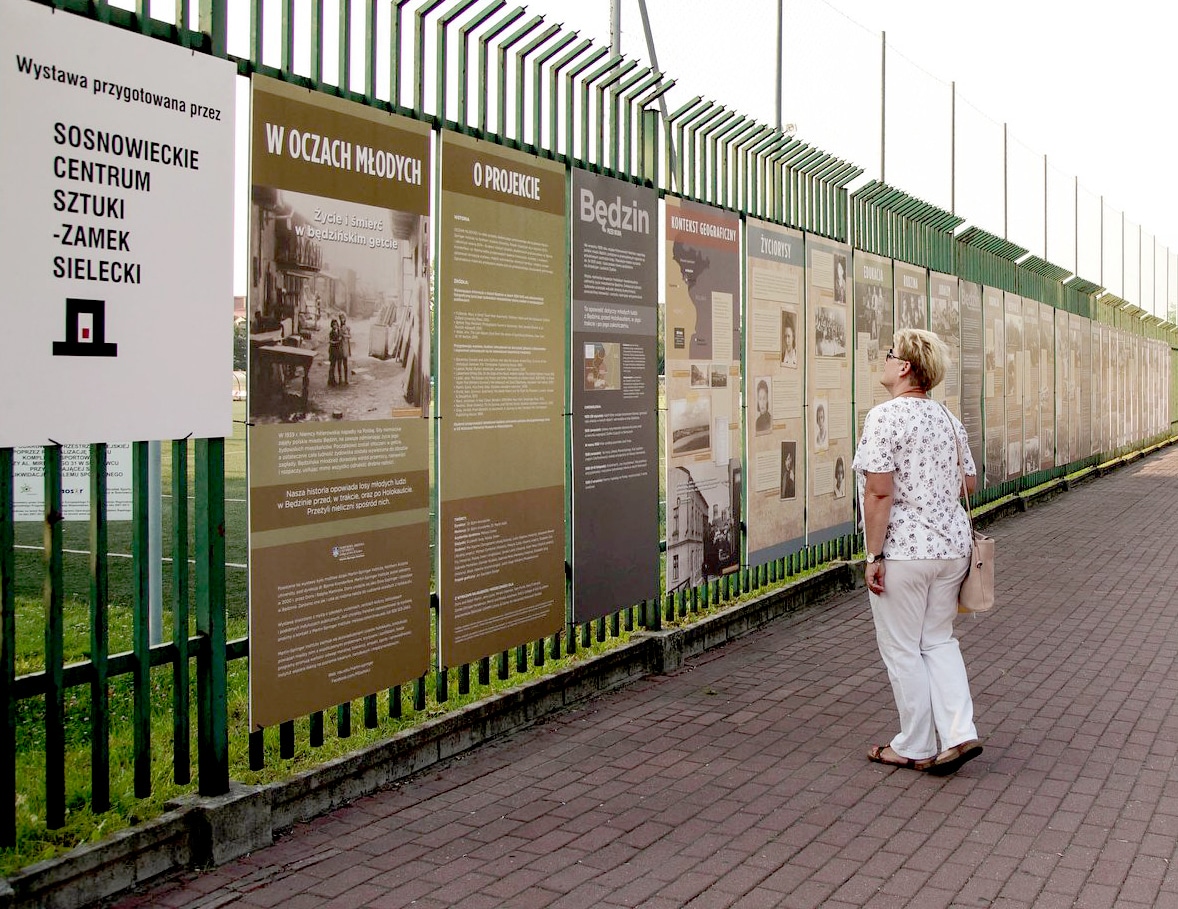
Digitization continued as the exhibit made its way to the East Coast. In 2018, while on display at a synagogue in Riverdale, New York, Krondorfer spoke to Holocaust survivors and their descendants from Będzin and the surrounding area. Word of the exhibit reached Monika Kempara, curator of an art center in Poland, who then worked with Krondorfer to translate the text of the exhibit into Polish and insert it into the graphic files for printing. That spring, the exhibit traveled overseas to Kempara’s hometown of Sosnowiec—a sister city of Będzin and former ghetto of the war some 80 years earlier—and was displayed along the fence of the local soccer fields.
“More than just a way to honor Doris who lived as an adolescent girl in Będzin, this exhibit focuses on young people in a specific location (a mid-sized industrial town in Poland) and humanizes the impersonal number of millions of Holocaust victims,” Krondorfer said. “Creating the exhibit—and later the accompanying website—shows how young people negotiated restrictive, brutal and eventually genocidal times. It offers a glimpse into their daily lives, their struggles, but also shows their spirited resilience.”
Now traveling internationally, the exhibit continues to grow in popularity. With it came the outpouring of stories from survivors of the Holocaust, along with their children, who stepped forward to offer additional resources, information and personal contributions to the exhibit.
Zimmerman was one of them.
Unlike many of the Holocaust victims, including his father and grandfather who died during the death march, Zimmerman was alive to share his story and contribute his experience to the exhibit. In 1944 when he and his family arrived to Auschwitz, the gas chambers had been discontinued four days prior. There, they stayed until they were liberated from the Soviet Army. In 1950, Zimmerman and his mother emigrated to New Haven, Connecticut, where he attended Yale University and became a professor of physics at Boston University. Read his full story online.
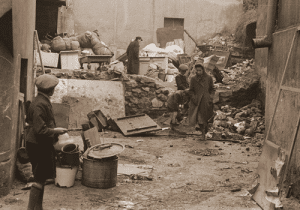
In May, the exhibit will be showcased in the Center of the Holocaust and Genocide located in Johannesburg, South Africa, where a large group of Będzin Jews settled and where their descendants still reside.
“This exhibit set a new direction in how to involve NAU students in meaningful public history and public humanities projects—projects that reach people’s hearts and minds not only on campus and in our community, but also regionally and, as we can see with this exhibit, internationally,” Krondorfer said. “I don’t think anyone at NAU at the time thought such a global reach and expansion would be possible.”
